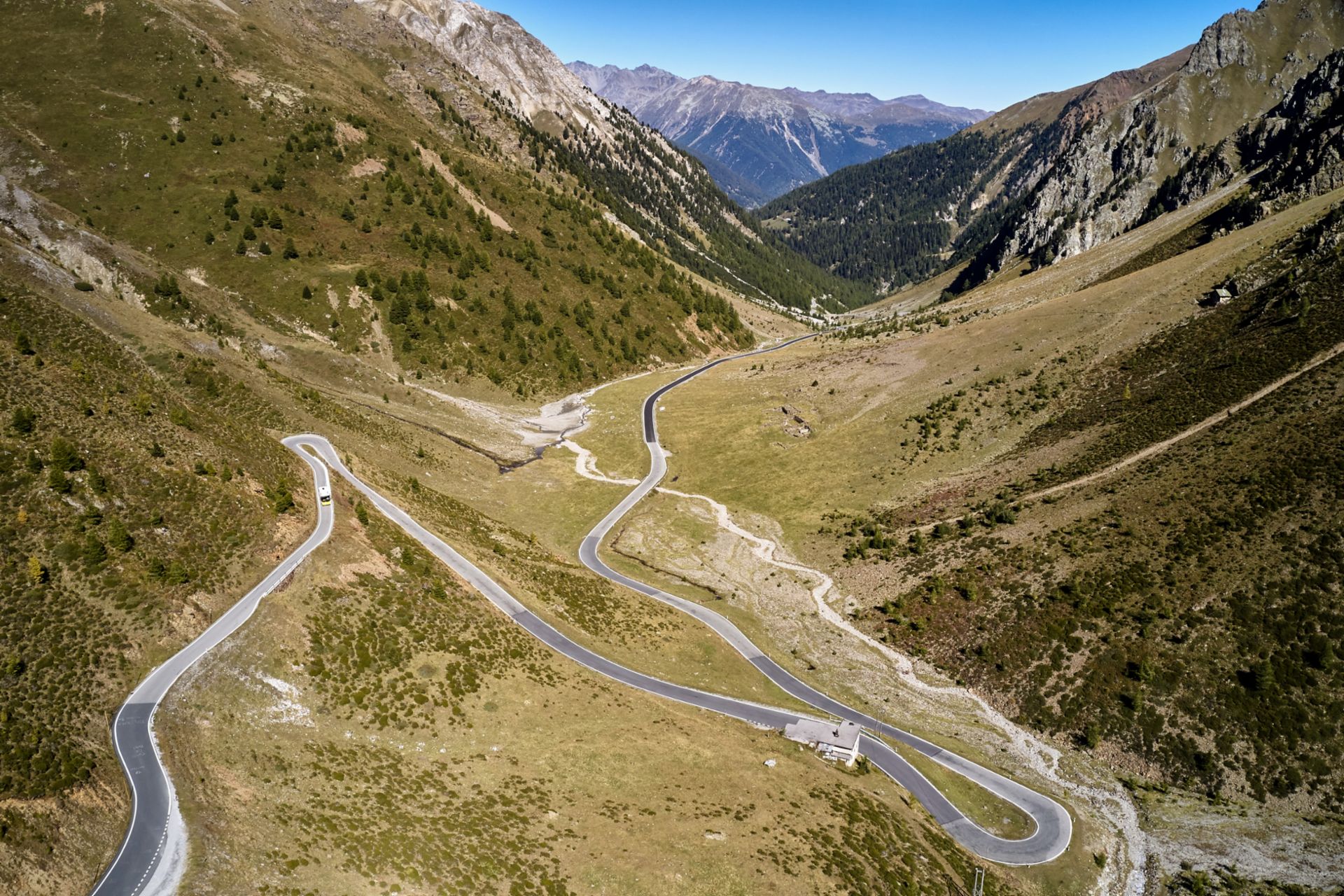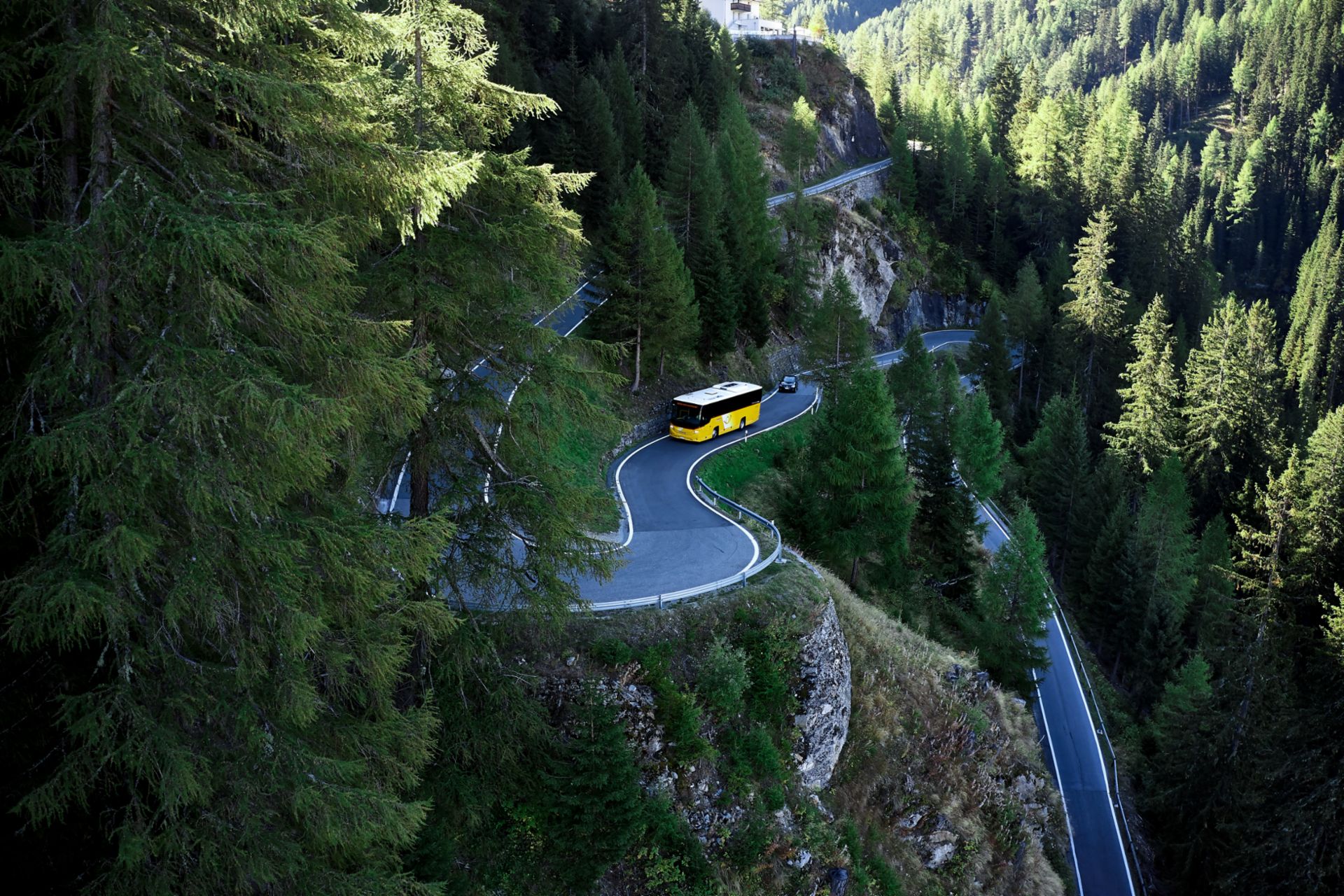In the early morning hours, tourists, cyclists, and a few locals are queuing outside the Benedictine Convent of St. John in Müstair, in the Swiss canton of Graubünden. Not for a visit to the 1,200-year-old UNESCO World Heritage Site, but for a bus ride that will live on in their memory for a long time.
The Stelvio bus route connects Val Müstair in Switzerland with the Valtellina region in northern Italy. The journey across the Stelvio Pass to Tirano is a mountain adventure offered from May to November by the Swiss bus company PostBus, which is called PostAuto in German.
The original road was built between 1820 and 1825 by the Austrian Empire. It was made to connect the former Austrian province of Lombardy with the rest of Austria, covering a climb of 1,871 meters. Since then, the route has not changed much. Its 85 tight turns are a challenge to drivers. Forty-eight of the corners are located on the northern side of the mountain and marked with stones.
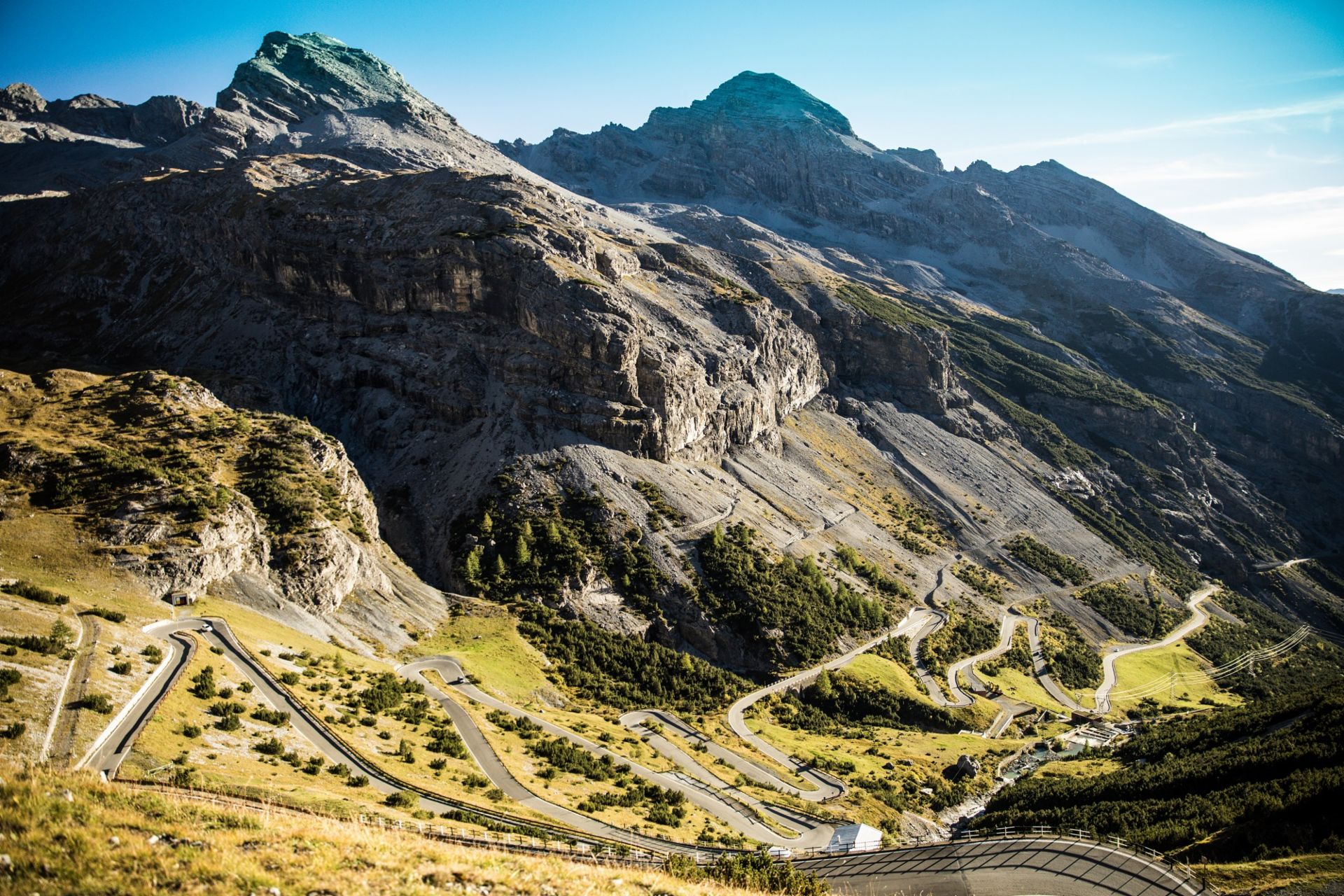
The route was nominated by the British automotive show Top Gear as the “greatest road in the world,” although it only covered Europe. Lamborghinis, Porsches, Ferraris, and Alfa Romeos are all tested to their limits on seemingly endless, heart-stopping curves. Countless cyclists and motorcyclists have struggled to get to the highest stretch of road in the Eastern Alps.
But the Stelvio Pass is not all fun and games. Many people underestimate the difficulty of the zigzag road and overestimate the capabilities of their vehicles, leading to accidents. This is especially true on the Italian side, where the climb is at its steepest and most challenging. Even the British Formula One racing driver Sterling Moss—a man who has been called “the greatest driver never to win the World Championship”—lost control of his car there and skidded off the road in a classic car race in the 1990s.
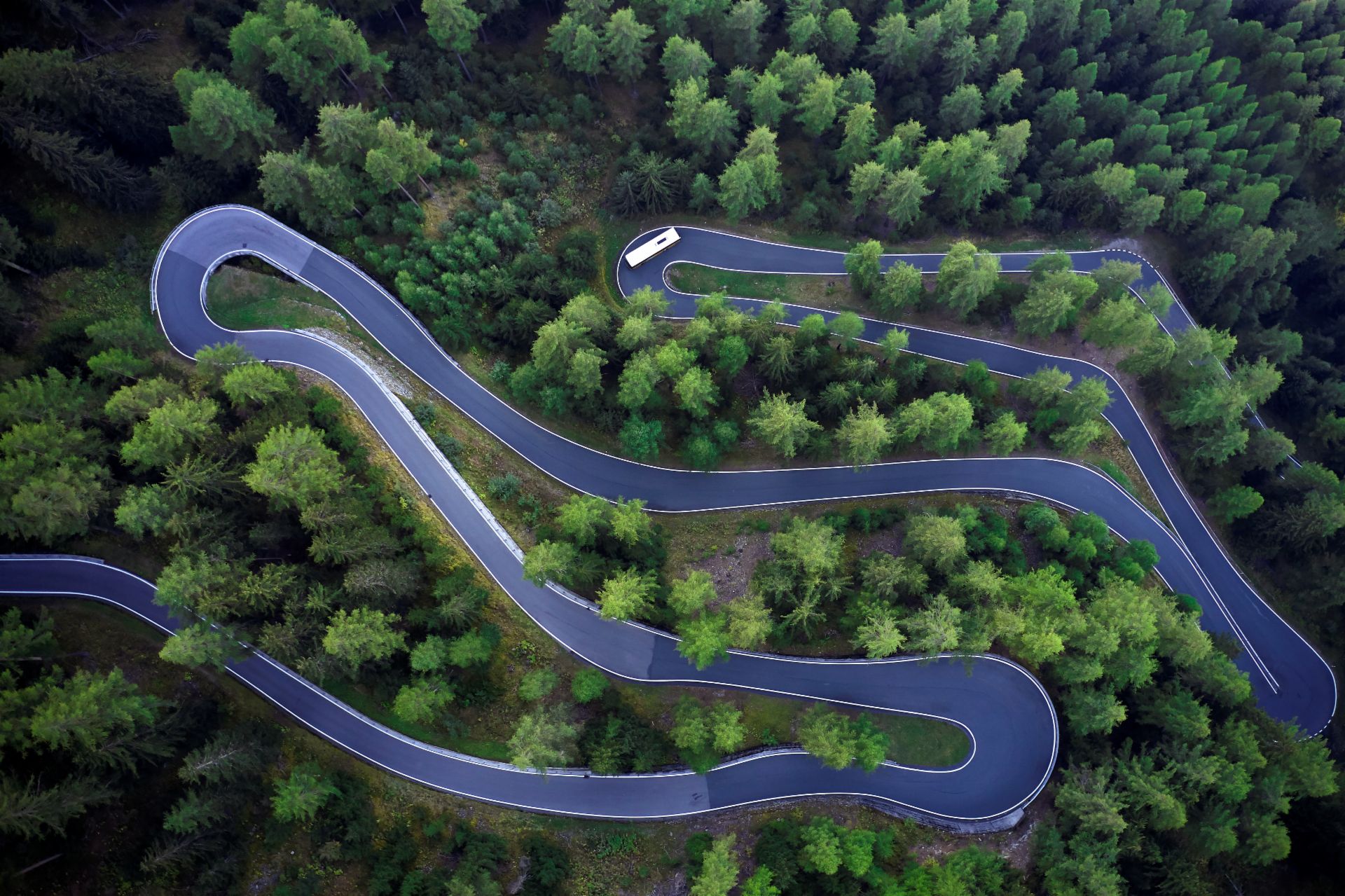
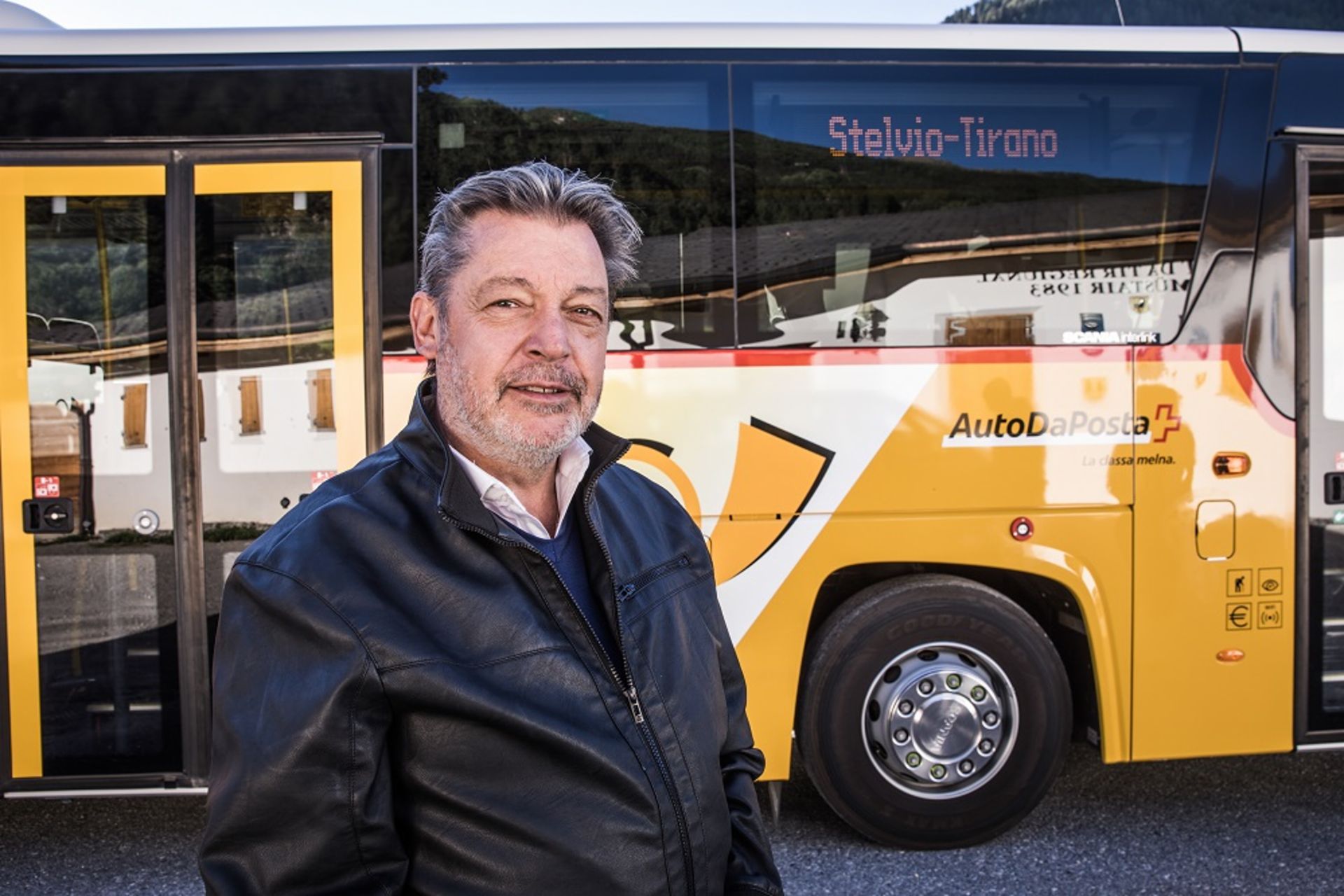
So, how can anyone come up with the idea of making Stelvio a regular bus route? “Scania’s Interlink bus was very important to us, as it was custom made to fit our exact specifications,” explains Bruno Brot from PostAuto. The yellow Scania postbus is perfectly suited to master the steep roads, high passes, narrow old tunnels, and sometimes truly terrifying hairpin bends.
The bus, which can be lowered by five centimeters when entering the narrowest tunnels, is 11 meters long, 2.55 meters wide, and 2.3 meters high. While no vehicles longer than 10 meters are allowed to operate on the Swiss side of the route, an exception was made for the bus, which, despite its length, has a wheelbase of less than five meters.
“But of course, the overall package was important for PostAuto, too,” continues Bruno Brot. “The vehicle costs, the customer benefits, and the expected operating costs must result in a balanced overall package. The reduction of fuel consumption, which was already noticed during the first week of operation, is extremely satisfying.”
When Walter Burch leaves Müstair with the postbus, he already knows what to expect. His bus is half full of excited passengers and a small rear carrier brings half a dozen mountain bikes and road bikes. There can be massive snowfalls, even in the summer and fall, but today the forecast is sunny and clear.
“The distance between Müstair through Umbrailpass and Stelvio down to the Italian city of Bormio and the terminal station Tirano is about 80 kilometers. Müstair is 1,200 meters above sea level, Stelvio 2,750 meters, and Tirano 400 meters above sea level, a difference in altitude of about 3,900 meters. This route could almost be added to the Guinness World Records. There are also huge temperature fluctuations of +30 to -30 degrees Celsius. It changes quite frequently,” Brot explains.
Walter Burch is thrilled by the adventure and drives his bus regularly, punctually, and reliably. He maneuvers the bus perfectly over ravines, and approaches the many blind bends by playing the iconic, three-tone PostBus horn to warn other drivers that he is coming.
A few hundred meters after crossing the border to Italy, Walter Burch stops the bus at the top of Stelvio Pass at 2,757 meters above sea level. This is where many of the hikers and bikers leave the bus. This is also the highest paved mountain pass in the Eastern Alps, and the second highest in the whole Alps. At an altitude of 3,450 meters, the Stelvio Pass Glacier usually permits skiing year-round and is a frequently used as a training ground for elite alpine skiers.
“Grazia fich,” or “thank you” in Rumantsch, the local language, one of the passengers says as she leaves the bus. With a break of 30 minutes, Walter has time to reflect on his life. He is a mostly retired driver and gets emotional when talking about his work. “I really love this vehicle and route. When you drive a bus in the city or in the plains, you’re just one in the crowd. But here, I feel special … like a real driver,” he says, patting the yellow bus.
When every curve is a challenge, he and his passengers must rely on the Scania bus. “To me, it’s a great driving experience and I truly need to rely on my vehicle. It gives a stable driving experience, very good maneuverability and optimum torque. And the passengers are delighted to travel on such a comfortable, stress-free excursion in this spectacular alpine landscape.”
